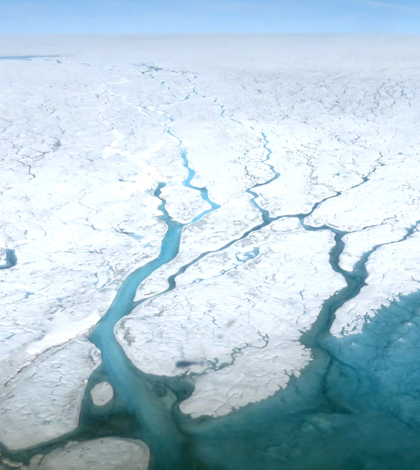Rising Sea Levels Linked With Greenland Changes

Rivers of melted ice on Greenland. (Credit: Maria-José Viñas / NASA Earth Science News Team)
Scientists at Rutgers University have found that rising sea levels are linked with a number of trends around Greenland. These include vanishing Arctic sea ice, persistent weather systems and surface ice melting on the island itself.
During Greenland summers, researchers say that melting Arctic sea ice favors stronger and more frequent “blocking-high” pressure systems, which spin clockwise, stay largely in place and can block cold, dry Canadian air from reaching the island. The highs tend to enhance the flow of warm, moist air over Greenland, contributing to increased extreme heat events and surface ice melting. That, in turn, fuels sea-level rise.
The increased melting on the Greenland ice sheet in recent years may also be linked to cooler-than-normal ocean temperatures south of the island, slowing ocean circulation.
The Rutgers study, published online in the Journal of Climate in February, tapped computer models and measurements in the field.
Top image: Rivers of melted ice on Greenland. (Credit: Maria-José Viñas / NASA Earth Science News Team)




0 comments